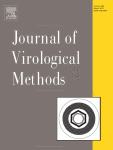Ver ítem
- xmlui.general.dspace_homeCentros e Institutos de InvestigaciónCICVyA. Centro de Investigación en Ciencias Veterinarias y AgronómicasInstituto de VirologíaArtículos científicosxmlui.ArtifactBrowser.ItemViewer.trail
- Inicio
- Centros e Institutos de Investigación
- CICVyA. Centro de Investigación en Ciencias Veterinarias y Agronómicas
- Instituto de Virología
- Artículos científicos
- Ver ítem
A rapid and affordable amplicon-based method for next generation genome sequencing of the infectious bursal disease virus
Resumen
The infectious bursal disease virus (IBDV) causes a severe immunosuppressive disorder in young chickens. IBDV evolution resulted in the emergence of strains with divergent genetic, antigenic, and pathogenic characteristics. Genetic classification is typically performed by sequencing the coding region of the most immunogenic region of the viral protein 2 (VP2). Sequencing both double-stranded RNA genome segments is essential to achieve a more comprehensive
[ver mas...]
The infectious bursal disease virus (IBDV) causes a severe immunosuppressive disorder in young chickens. IBDV evolution resulted in the emergence of strains with divergent genetic, antigenic, and pathogenic characteristics. Genetic classification is typically performed by sequencing the coding region of the most immunogenic region of the viral protein 2 (VP2). Sequencing both double-stranded RNA genome segments is essential to achieve a more comprehensive IBDV classification that can detect recombinants and reassortments. Here, we report the development and standardization of a tiled PCR amplicon protocol for the direct and cost-effective genome sequencing of global IBDV strains using next-generation technology. Primers for tiled PCR were designed with adapters to bypass expensive and time-consuming library preparation steps. Sequencing was performed on Illumina MiniSeq equipment, and fourteen complete genomes of field strains were assembled using reference sequences. The PCR-enrichment step was used to obtain genomes from low-titer biological samples that were difficult to amplify using traditional sequencing. Phylogenetic analyses of the obtained genomes confirmed previous strain classification. By combining the enrichment methodology with massive sequencing, it is possible to obtain IBDV genomic sequences in a fast and affordable manner. This procedure can be a valuable tool to better understand virus epidemiology.
[Cerrar]

Autor
Techera, Claudia;
Tomás, Gonzalo;
Grecco, Sofía;
Williman, Joaquín;
Hernández, Martín;
Olivera, Valeria Soledad;
Bandac, Alejandro;
Vagnozzi, Ariel Eduardo;
Panzera, Yanina;
Marandino, Ana;
Pérez, Ruben;
Fuente
Journal of Virological Methods 322 : 114807 (2023)
Fecha
2023-12
Editorial
Elsevier
ISSN
1879-0984
Formato
pdf
Tipo de documento
artículo
Palabras Claves
Derechos de acceso
Embargado
 Excepto donde se diga explicitamente, este item se publica bajo la siguiente descripción: Creative Commons Attribution-NonCommercial-ShareAlike 2.5 Unported (CC BY-NC-SA 2.5)
Excepto donde se diga explicitamente, este item se publica bajo la siguiente descripción: Creative Commons Attribution-NonCommercial-ShareAlike 2.5 Unported (CC BY-NC-SA 2.5)


